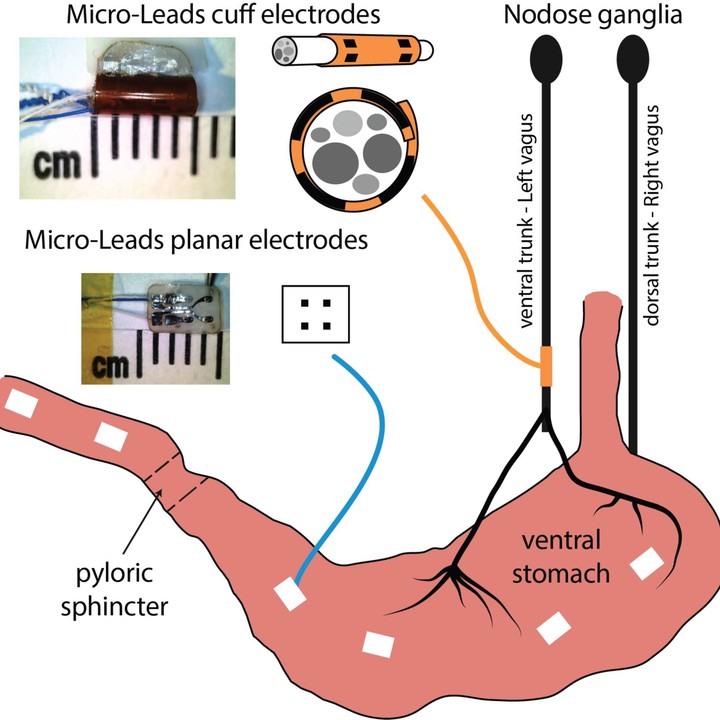 Schematic of experimental setup and electrode placement
Schematic of experimental setup and electrode placement
In contrast to gastric electrical stimulation, direct modulation of vagal signals could provide for a more targeted therapy for gastroparesis. Experiments in animals indicate that electrical stimulation of the abdominal vagus enhances motility and gastric emptying, but this therapeutic modality has not been applied to gastroparesis. Indeed, this could include closed-loop control by incorporating automatic detection of gastric dysrhythmias associated with gastroparesis, which are associated with nausea and emesis in humans and precede emesis in animals. We use gastric dysrhythmias as a signaling event to trigger electrical stimulation of abdominal vagus nerve and correct gastric motility and inhibit emetic signaling. This can provide the critical efficacy and safety data needed to establish closed-loop neuromodulation of gastric function and control of nausea and emesis. In contrast to current therapies for gastroparesis, this approach could also provide long-term effective therapy, with limited off-target effects.
